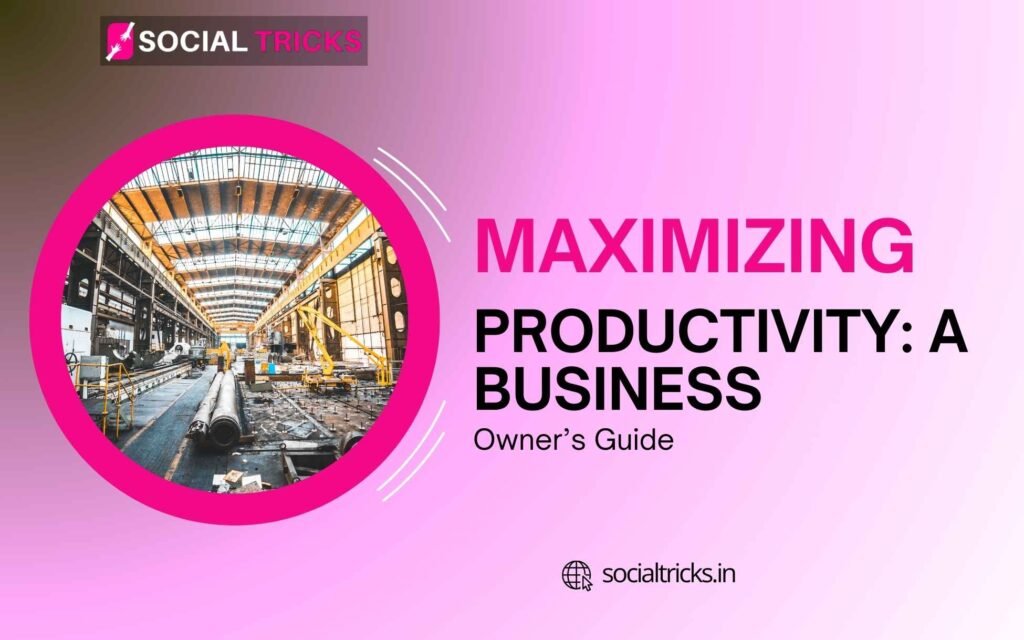Business can feel overwhelming, yet with the right guides, one can achieve greater results within a short period of time. Productivity is not about working hard; it is about working smart. A guide is put together to stimulate the acquisition of productivity skills and the development of businesses by business persons.
Why Productivity Matters to Business Owners
Being productive is the backbone of a small or large scale prosperous business. The importance is as follows:
- Time Management: Time is a resource that has no power of regeneration. Be productive, and that time will be utilized fully.
- Maximizing Profits: Because with high productivity comes efficiency, so, therefore, there’s less waste.
- Employee Morale: If the company learns to function productively, the workers’ morale is likely to be stimulated.
- Increased Opportunities for Growth Operations, innovation, and growing a business has a close tie.
- Statistic: Improvement of workplace productivity can uplift economic growth by 2% every year; McKinsey reported.
Common Productivity Challenges for Business Owners
- Multi-tasking: Juggling about too many responsibilities.
- Distractions: For instance, social Media distractions, email distractions, or unexpected meetings.
- Procrastination: The delaying of utmost tasks.
- Inefficient Processes: You working with old Tools and lines of operations.
- Missing Delegation: Attempting to do everything alone.
Best Strategies for Enhancing Productivity
1. Setting Clear Goals
- Break long-term goals into small, meaningful goals.
- Apply the SMART standards: Specific, Measurable, Achievable, Relevant, Time-bound.
Here’s an example: Rather than to say, “I would like to increase sales,” you might instead say, “Increase monthly sales by 20% within six months.”
2. Prioritize Tasks
Create clarity on which tasks are most important and focus on getting those done as quickly as possible.
Use the Eisenhower Matrix to classify tasks:
- Urgent and Important: Act on these immediately.
- Important but not Urgent: Schedule these.
- Urgent but non-important: Delegate.
- Neither Urgent nor Important: Eliminate.
Tip: Focus on high-impact, revenue-driving, and operational-improvement tasks.
3. Leverage Technology
Use technology to simplify tasks:
- Project Management: Trello, Asana, and Monday.com.
- Communication: Microsoft Teams, and Slack.
- Accounting: Xero or QuickBooks.
FACT: An organization using automation sees an improvement of 20% in efficiency, Forbes says.
4. Time Blocking
Block your time according to the task assigned to each time. For example:
- 9 to 11 AM: Client emails.
- 11 AM to 1 PM: Strategic plans.
- 2 PM to 4 PM: Team meetings.
It cuts down on decision fatigue, ensuring sustained focus.
5. Outsource and Delegate
You are not going to be able to handle everything alone. Look to outsourcing for any of these tasks:
- Admin Work: Virtual Assistants.
- Marketing: Freelancers/Agencies.
- IT Support: Managed Service Providers.
STAT: Delegation can eventually improve team efficiency by 30% (Harvard Business Review).
6. Elimination of Distractions
- Disable all non-essential notifications.
- Set your “do not disturb” hours.
- Create a workspace dedicated to work.
Tip: Consider using Freedom or StayFocusd to block disruptive websites.
7. Adopt Healthy Habits
A healthy body gets things done. Fuel it:
- Get an average of 7-8 hours of sleep a night.
- Fit exercise into your routine to power up your energy levels.
- Eat food that provides nutrients so as to harness and use all that great energy.
FACT: Regular exercise can boost productivity by 15% (American Psychological Association).
8. Monitoring and Adjusting
Always keep a close watch on your own progress. Implement productivity gadgets, say on your phone:
- RescueTime helps in checking how much time one was on tasks.
- Toggl to manage work hours.
- Track productive trends on Clockify.
The Role of Team Productivity
The productivity of your team can directly affect your success as a business owner. Here’s how to enhance team performance:
1. To set clear expectations
- Be clear about goals and deadlines.
- Provide detailed on task instructions.
2. Develop Team Collaboration
Tools can be helpful include:
- Google Workspace for file-sharing.
- Zoom for virtual meetings.
- Miro for brainstorming sessions.
3. Reward Achievement
Increase motivation by celebrating milestones. For example:
- Monthly awards to employees.
- Public recognition in meetings.
- Bonuses for high-performance.
4. Training and Development
Upskill your team to increase efficiency. Offer:
- Online courses (Coursera, Udemy).
- In-house workshops.
- Industry seminars.
Measuring productivity in business.
Monitor your company’s KPIs:
- Revenue per Employee: Total Revenue divided by the number of employees.
- Customer Retention Rate: Determines the rate of customer satisfaction.
- Task Completion Rate: Tracks how many tasks are completed on time.
- Profit Margins: Signals financial efficiency.
Tip: Utilize Google Analytics or Tableau to leverage data for analytics.
Example of Successful Small Business: A Case Study
Study Example: A bakery owner struggling with time and sales productivity. Suddenly, through implementation of the strategies above:
- Set up a Goal: Brought online orders to 25%.
- Technology Usage: Started using Square for payments.
Hiring: Employed a part-time social media marketer.
As a result, 40% of the monthly income had been up within 6 months.
Conclusion
- Readily available, clear, and practical objectives.
- Effective tools to prioritize tasks.
- Efficiency through technology.
- Outsource and delegate those tasks you don’t want to be bogged down with.
- Be ready to regularly track and recalibrate your tactics.
Remember: Productivity is a journey, not a destination. Small changes can yield large results.
As you sustain these methods, build a productive environment to foster growth and success. Commence now and see your company grow!


